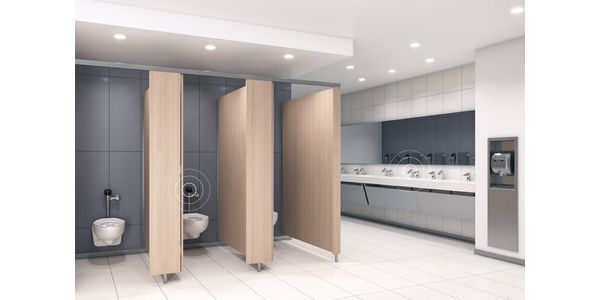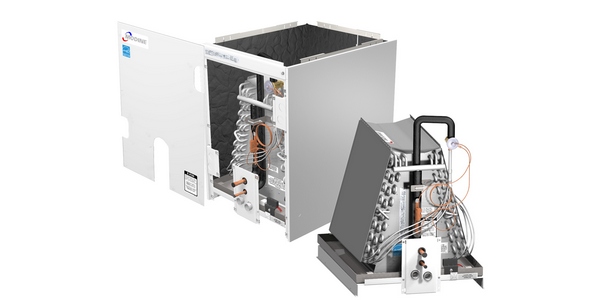The Connected Restroom: Get Familiar with the Future
Smart restroom products improve maintenance by communicating data

By Faye Badger
Over the last two years, facilities across the country have prioritized sensor-operated commercial restroom fixtures due to greater hand hygiene awareness in the wake of COVID-19.
In fact, several market reports are indicating sales of sensor faucets are expected to grow, making the touch-free renaissance an important element that industry professionals need to embrace as a growing number of facilities continue adopting these fixtures.
But enhanced hygiene isn’t the only benefit that sensor-operated products bring to the table. It’s also the technology inside these products that is making them so popular.
Thanks to Bluetooth technology, many of these sensor-activated faucets and flushometers gather data to communicate critical information through smartphone apps. This helps facility managers proactively monitor water usage, number and length of activations, remaining battery power and more.
Gone are the days of maintenance and repair calls where plumbers and contractors needed to crawl under the sink to control faucets or crouch down in stalls to control flushometers. Now, these sensor-operated fixtures enable facility professionals to wirelessly monitor product status, easily generate and share diagnostic reports and quickly access necessary data — right from their fingertips.
Insights of IoT
With Bluetooth technology and the Internet of Things, facility professionals can gain more insights about potential repairs before it’s too late.
Is the smartphone app showing that a product hasn’t used any water in the last several hours? If so, it’s likely out of order, and a checkup may be required. Want to troubleshoot issues before they become bigger problems? A diagnostics program is designed to quickly identify solutions. When arriving onsite to address maintenance concerns, having this information on hand and being familiar with the technology can save valuable time on repairs.
This innovative technology makes it easier than ever to perform more accurate and efficient preventive maintenance. Instead of replacing parts on a fixed schedule, facility managers and plumbers know exactly when they need to be replaced.
On-demand timeout settings help support water efficiency and enable facilities to achieve LEED ratings and additional certifications. This combination of increased sustainability and lowered costs is driving more facility managers to adopt sensor-operated technology, making it more than likely that industry pros will encounter this innovation at an upcoming customer visit.
IoT in action
Some of the largest venues in the country have already put this technology into practice.
Globe Life Field, home of the MLB’s Texas Rangers, recently implemented Bluetooth fixtures. This has helped the park’s facility maintenance teams wirelessly monitor the health and status of flushometers, while saving time and increasing water efficiency. At the same time, the Bluetooth-enabled faucets are providing quick information on battery life, water usage and troubleshooting.
Similarly, at Empower Field at Mile High – home to the NFL’s Denver Broncos – Bluetooth-enabled flushometers help staff spot potential issues before they happen and generate and share diagnostic reports.
With the market for connected plumbing fixture products expanding, Bluetooth-connected faucets and flushometers make maintenance easier than ever. Industry professionals can leverage data collected through apps to adjust and configure connected products, all while staying proactive when it comes to repairs.
Faye Badger is Sloan’s product line manager for IoT, where she leads the company’s efforts in connected restroom technology.




